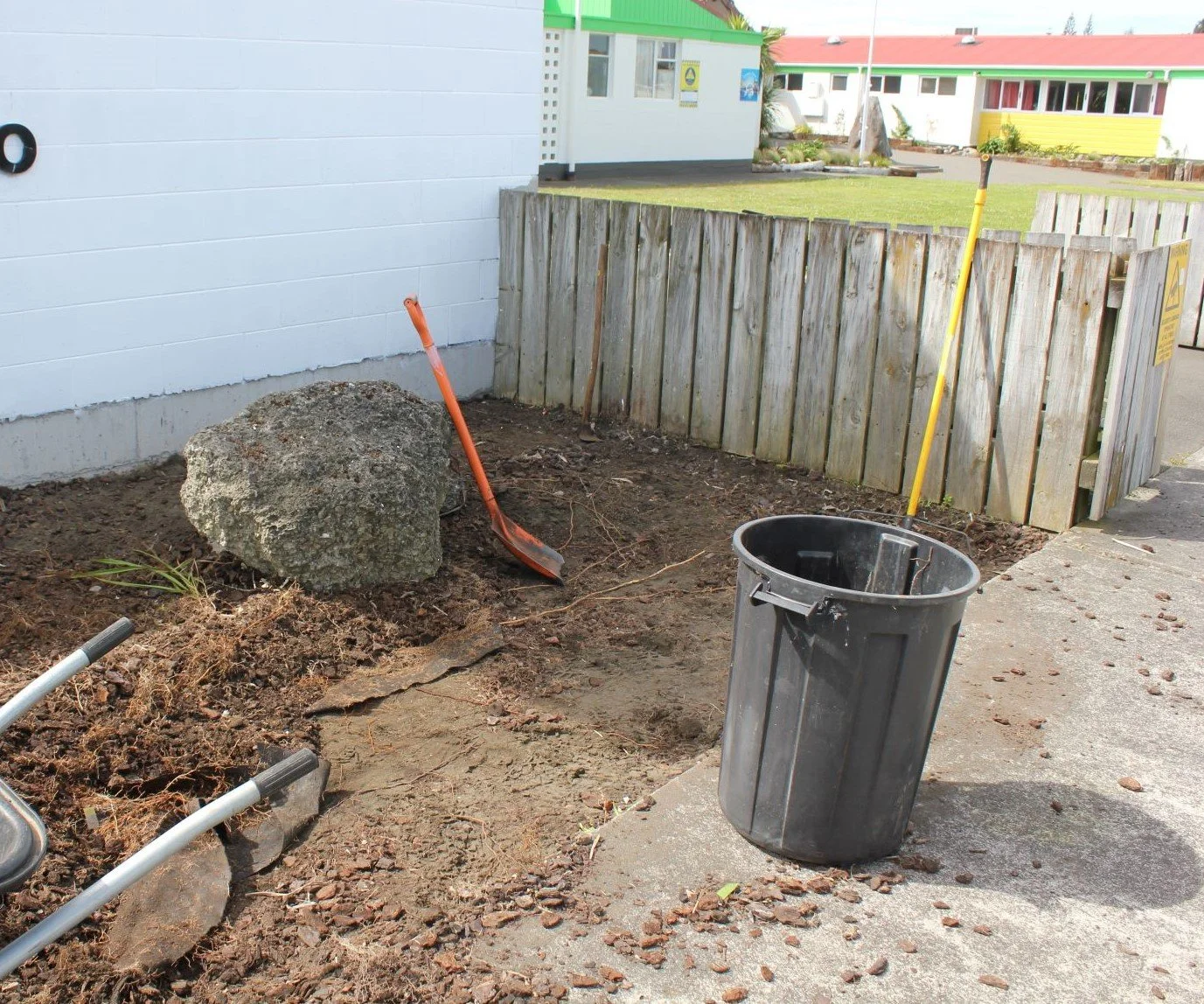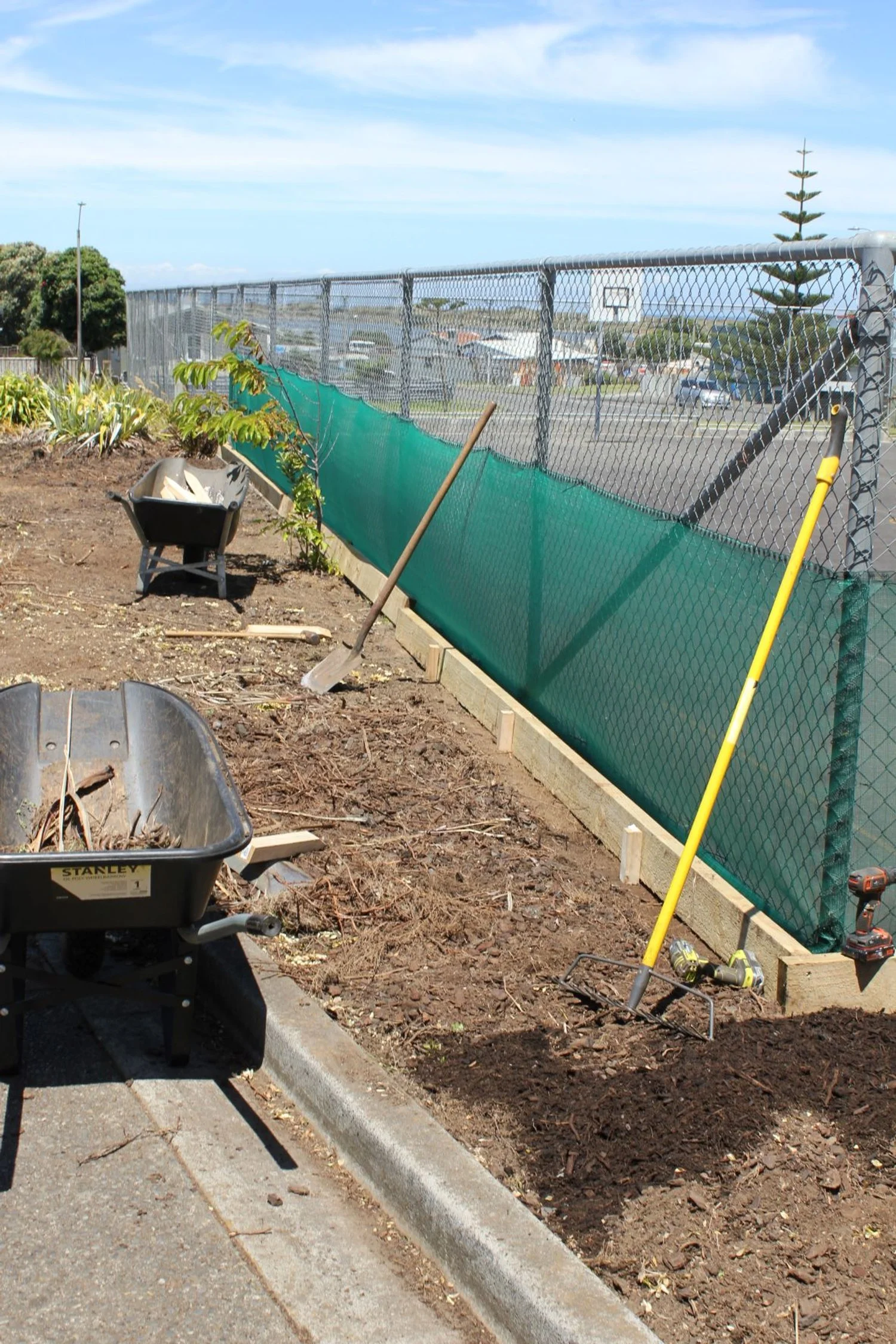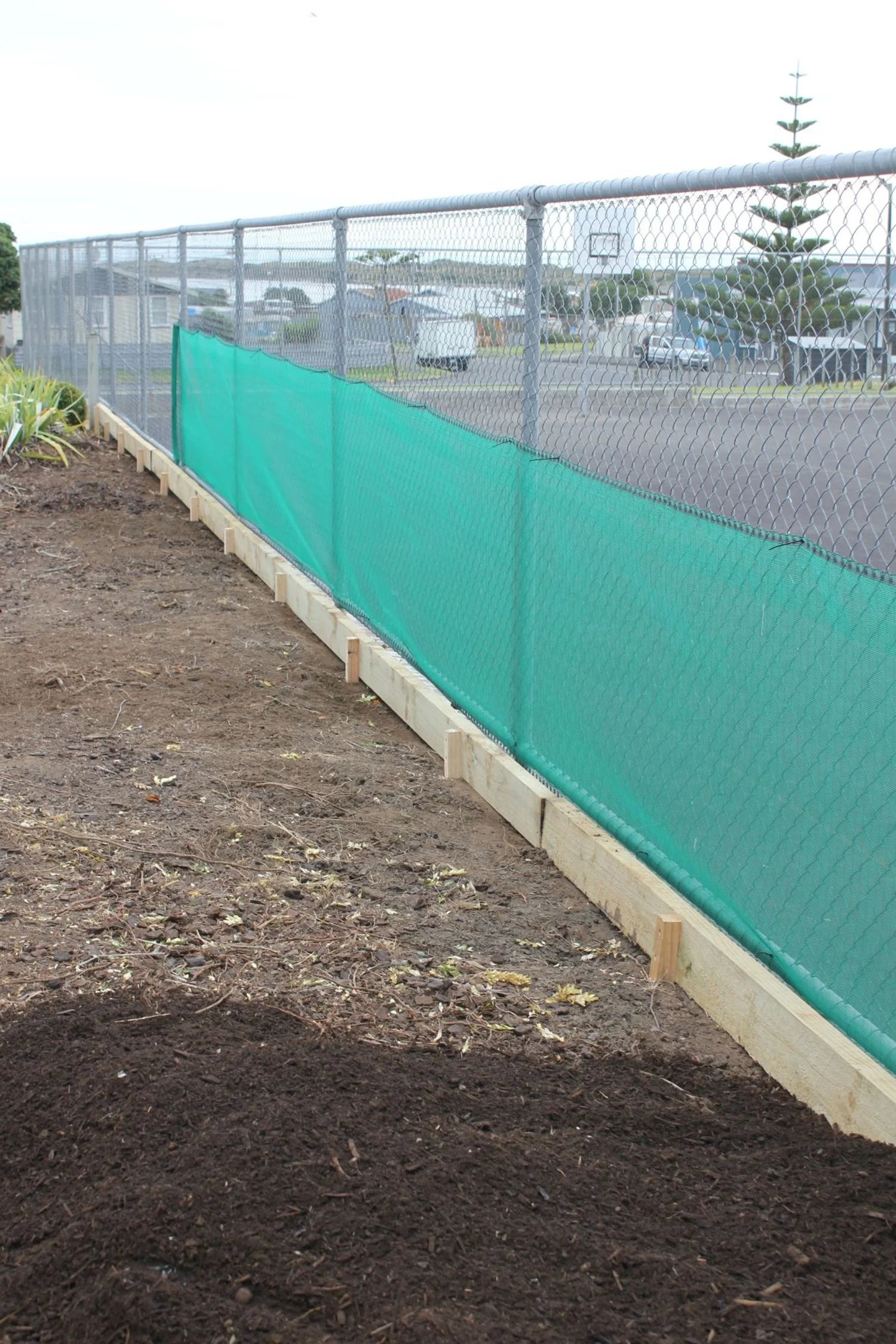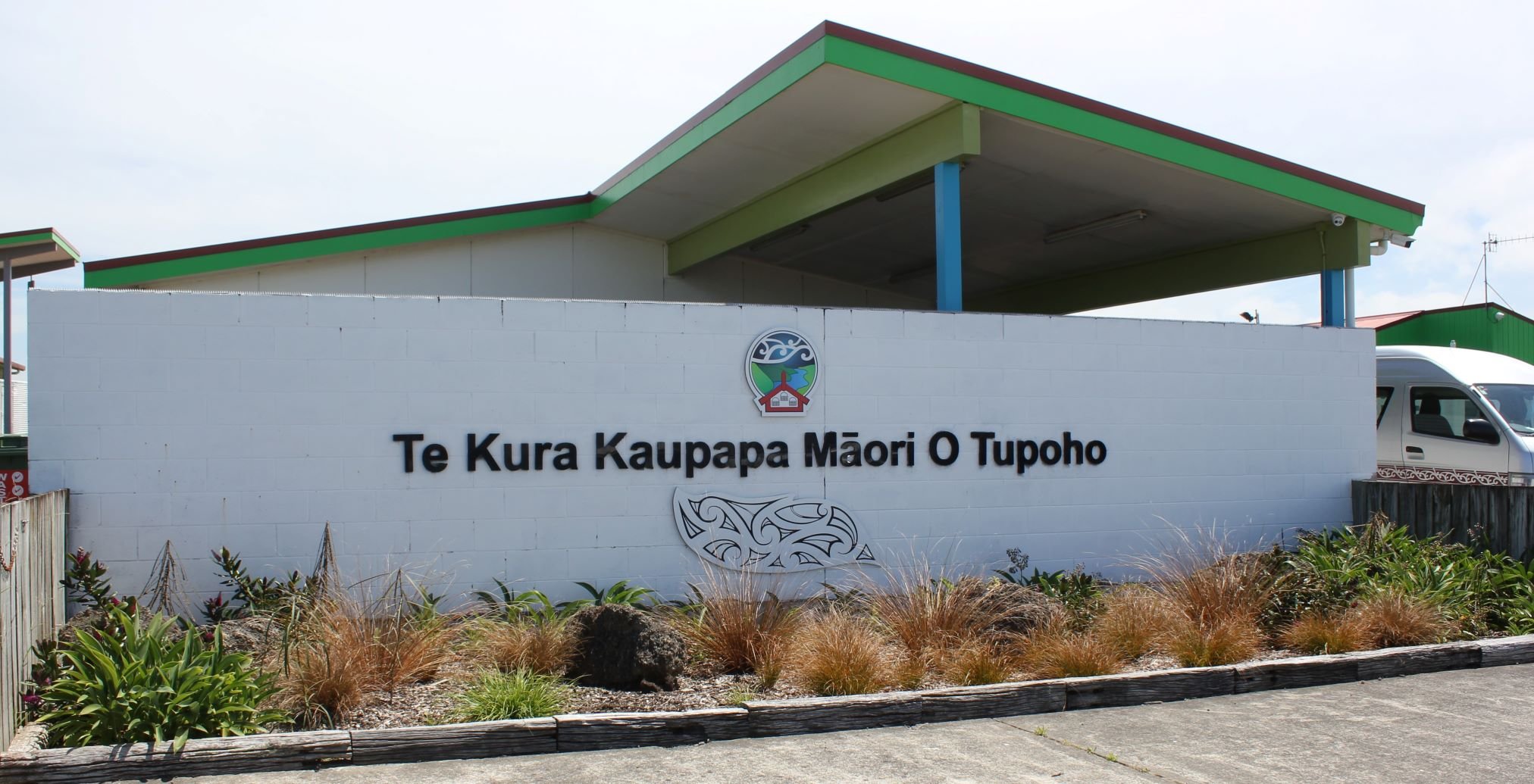Matariki Entrance
Te Kura Kaupapa Māori O Tupoho - Castlecliff, Whanganui, New Zealand
This is the main entrance for manuhiri (visitors) to be welcomed onto the kura grounds with a pōwhiri (formal welcome). A high wind area at the top of the hill the plants must be able to withstand hot, dry and often windy conditions. We used native and suitable climatic species from neighbouring countries which could be welcoming and familiar to visitors.
Low-maintenance species provide a warm welcome to the Kura, with shelter from strong southerly winds. Planting is dense to shade the soil from sun and drying winds. Corymbia ficifolia, Phylica pubescans, Grevillea sp. Callistemon sp, Banksia sp, Leucadendron sp, Hibiscus and Canna Lilies have been included, together with native Meryta sinclairii (Puka), Cordyline australis (Tī Kōuka Cabbage Tree), Dodonaea viscosa (Akeake), Piper excelsum (Kawakawa), Veronica salicifolia, Hebe salicifolia (Koromiko), Muehlenbeckia, Austroderia fulvida (Toetoe), Arthropodium cirratum (Renga Renga) Pseudopanax ferox and Pseudopanax crassifolius (Horoeka), mini Toetoe, Hebe, Renga Lily and Tussock Grasses frame the Kura sign, and are used throughout for texture and highlights of colour.
Plant Selection
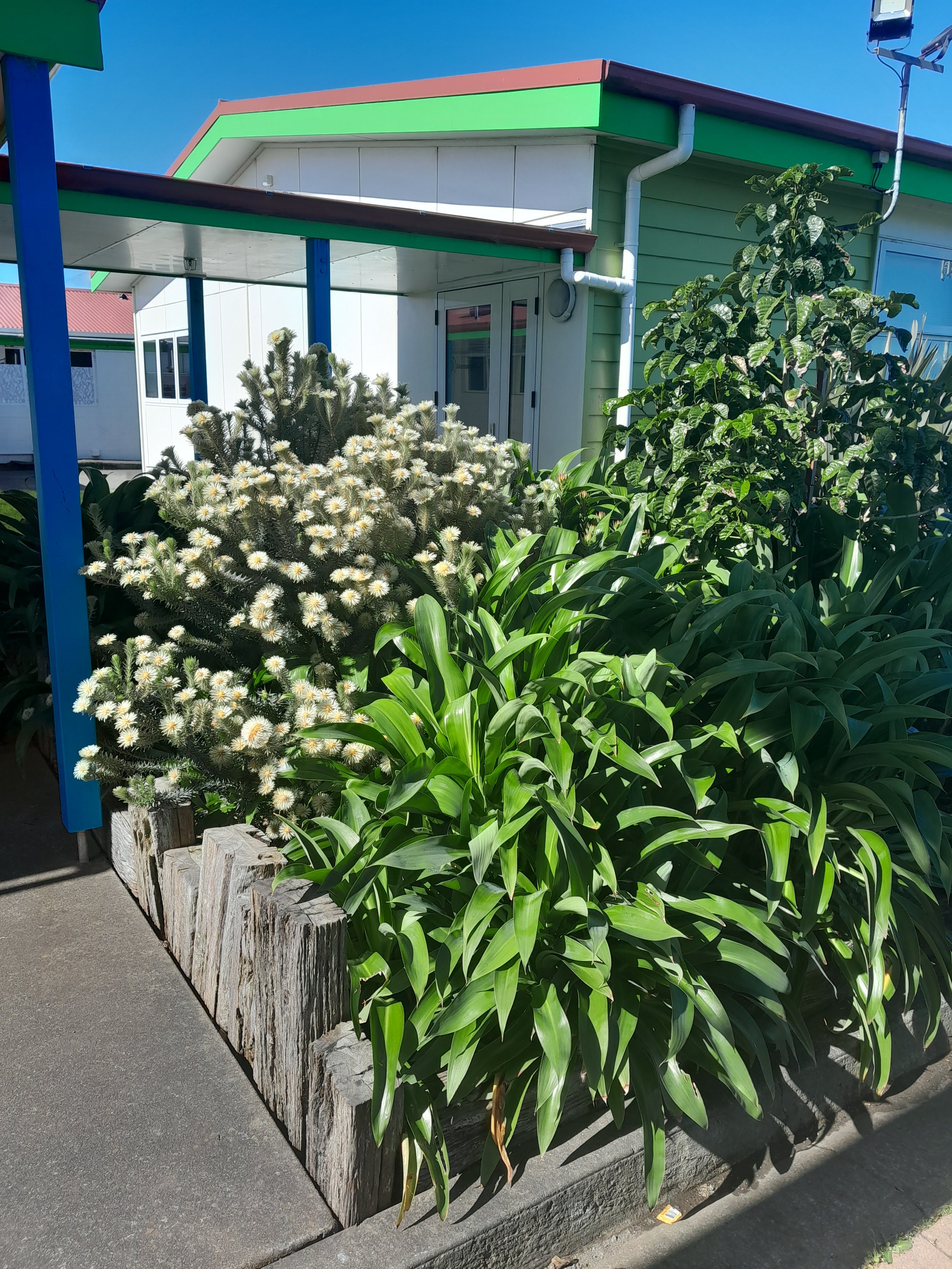




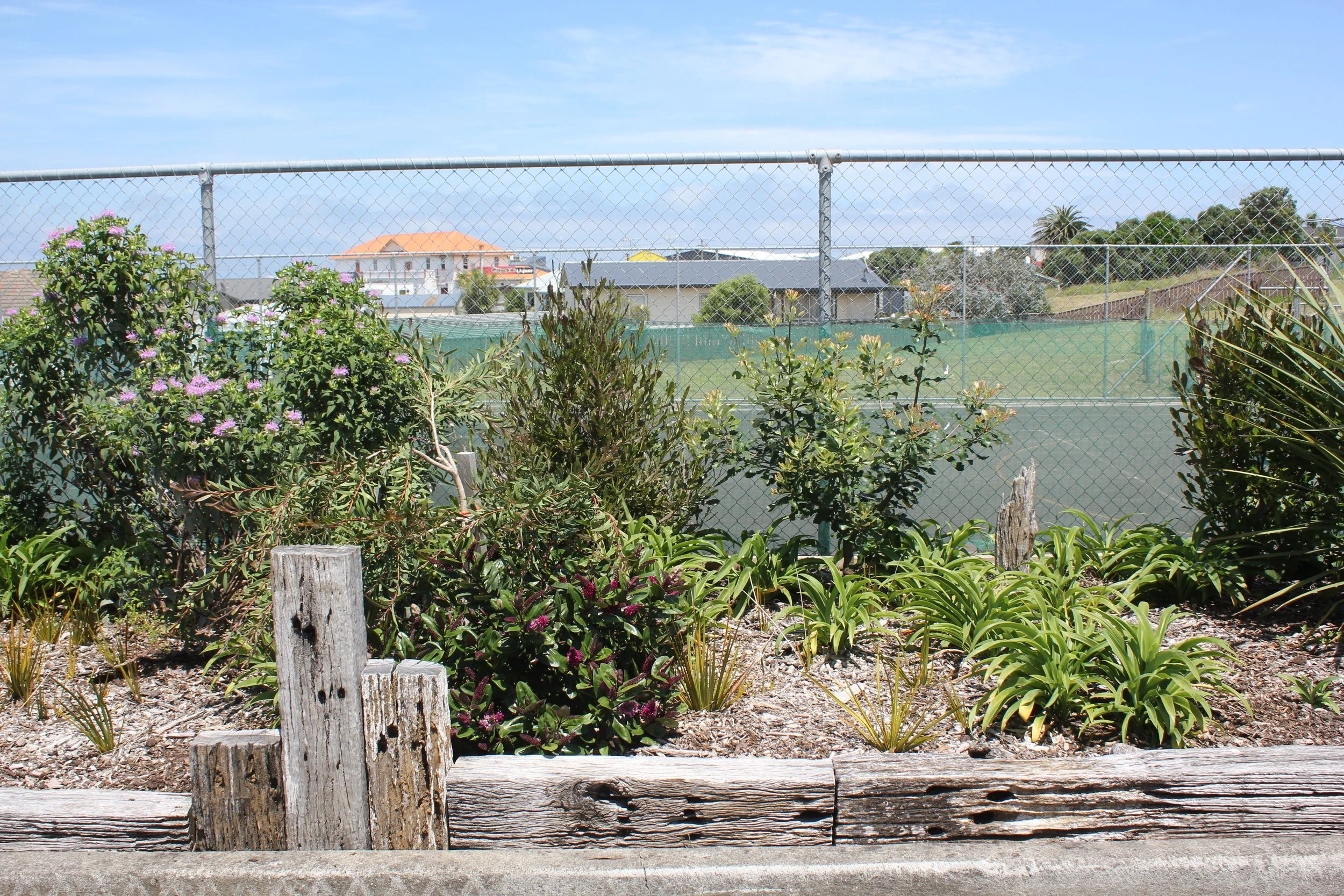

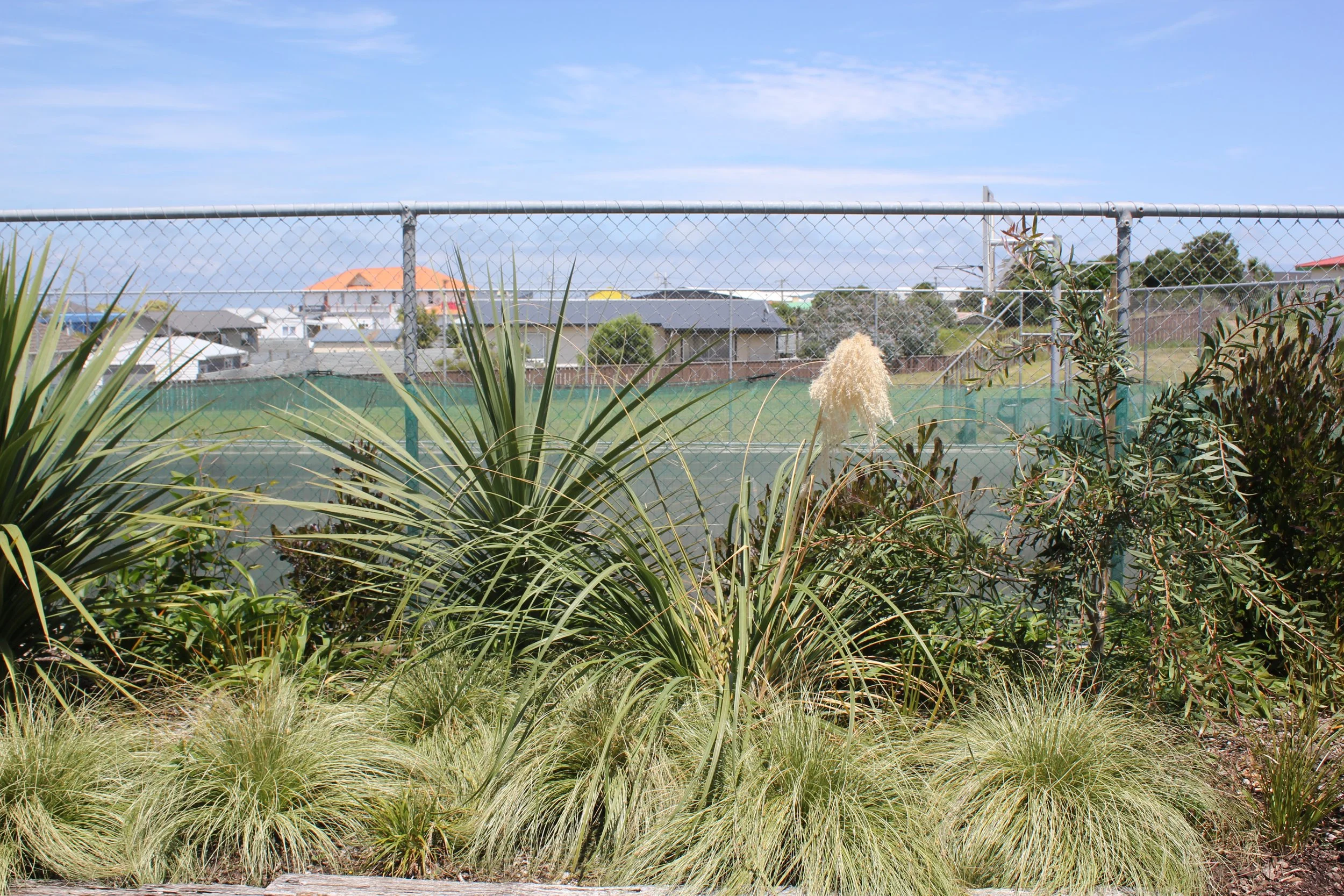



Initial works removed historic weed mat and most of the existing plantings as the mat had starved plants and soil leaving the soil hydrophobic. Weed mat prevents the movement of water, worms and plant roots through the soil, and should be avoided. Instead, use cardboard as this will suppress weed growth but will break down over time to feed soil life, especially worms improving soil health.
Edging and railway sleepers were added to contain compost and mulch which rebuilds the soil structure and feeds mico-organisms, increasing the soil’s ability to hold and retain water.
WORKS



